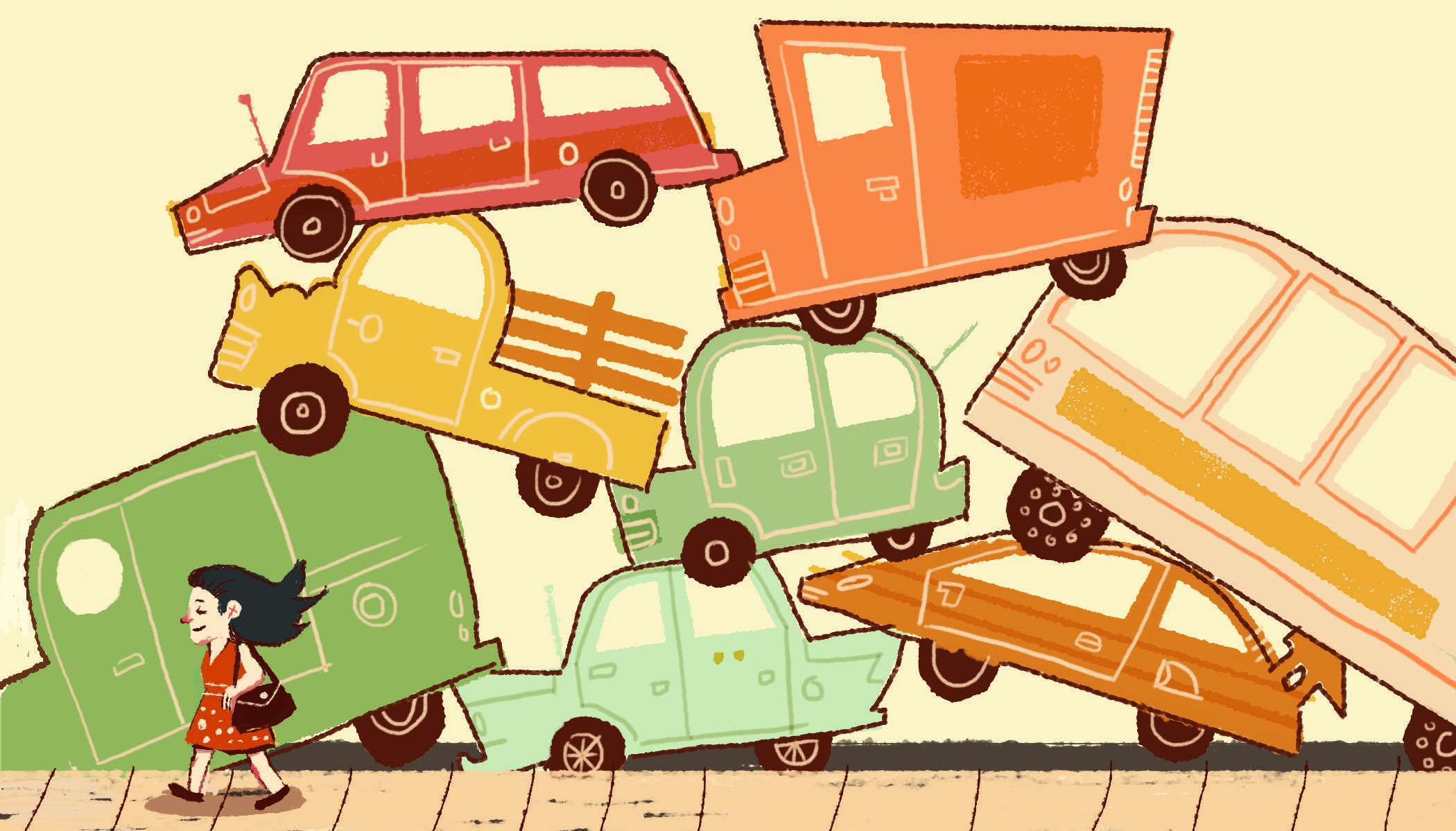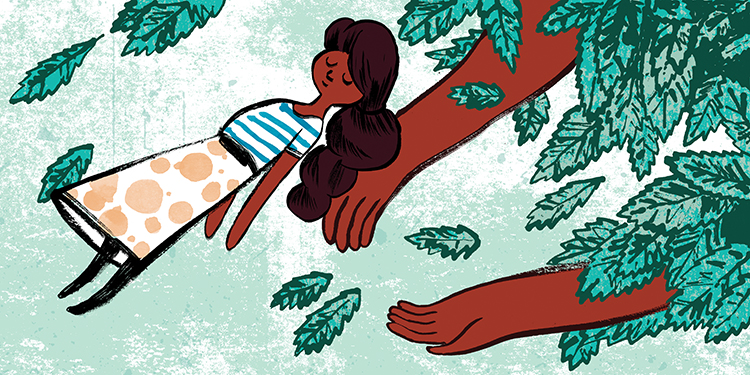by Mary Van Ogtrop
Illustration by Julia Tran
Want to enjoy your commute? Try walking.
At 7 a.m., my clock radio powers on to the sound of WXPN. “It’s a cold morning in Philadelphia,” the announcer says, a little mournfully, “with a low of 23.”
My eyes flashed open and I hopped up. Over 20 degrees: better get walking.
In 2007, when I lived in one of the brightly colored rowhomes along 45th Street in West Philadelphia, I started walking to work. As long as the temperature was above 20 or below 90, I was on foot. Each morning, I enjoyed exercise (without paying for a gym membership!), communion with my fellow pavement-pounders and the joy of not having to depend on SEPTA. Why shouldn’t I walk? I was naturally equipped to do it.
This is not to say it was easy. I worked at 17th and Chestnut, making my morning commute 2.6 miles. Every day, I’d walk through Penn’s campus, past Drexel, over the (sometimes frozen) Schuylkill River and finally into Center City. I can’t tell you how many buses and trolleys passed me, or just how sweaty I got under my two sweaters and down coat. I will tell you that I took great pleasure in telling my bewildered co-workers just how far I’d walked—and I still do, because eight years later I’m still walking.
Exercise was the reason I started, but it’s not why I’m still walking. The more I’ve walked, the more I’ve realized how often people rely on automobiles when their feet will do just fine. Now, I walk to combat automobile-related laziness and the larger environmental problems it creates.
It’s the little trips I’m talking about: hopping on the bus at 10th Street to arrive—one traffic jam and 10 frustrated minutes later—at 18th Street. Grabbing a cab home after dinner (when a walk would do your belly good). Driving when the day’s plans involve crossing the perpetually bottlenecked Broad Street. Buckling up rather than lacing up.
Think about what you contribute to when you drive: fuel production, carbon emissions, traffic, smog, parking lots and the health problems related to poor air quality. Walking is a small act, but the miles add up, and each step is a step in the right direction. What if just five more people committed to walking to work, swapping out the release of carbon monoxide for exhalations from hard-working, happy lungs?
Philadelphia really is a walker’s city—Walk Score ranks it fourth in the country—with flat terrain, a coffee shop or restaurant to pop into every few steps, and plenty of green space for ambling. According to the website, Center City itself claims a walkability score of 98, falling into the category of “Walker’s Paradise,” such that “daily errands do not require a car.” Still, traffic remains a constant in Center City. Now living in the Graduate Hospital neighborhood, I can always count on hearing a barrage of car-honking.
I understand all that vehicular frustration, and offer a simple solution: Put the car in park. Roam the city on foot. Get to know the city from its sidewalks, tracing the grid that William Penn first designed for his proposed “Greene Country Towne” in 1683—today the backbone of Center City—making it so easy to navigate. Take your time strolling through Rittenhouse Square, ogling the produce and cheeses lining the Italian Market and checking out the boats docked at Penn’s Landing. Walk along the new Schuylkill Banks Boardwalk, knowing that you could follow the trail another 26 miles to Phoenixville, happily bypassing the traffic on 76.
Wherever you go in Philadelphia, enjoy the walk. You’re naturally equipped for it—and so is our city.
Mary van Ogtrop is a freelance writer and outdoor spaces enthusiast. More of her writing can be seen at maryvanogtrop.com.






It good, it’s knowledgeable. Glad I choose this to be my source of lacking my boredom.